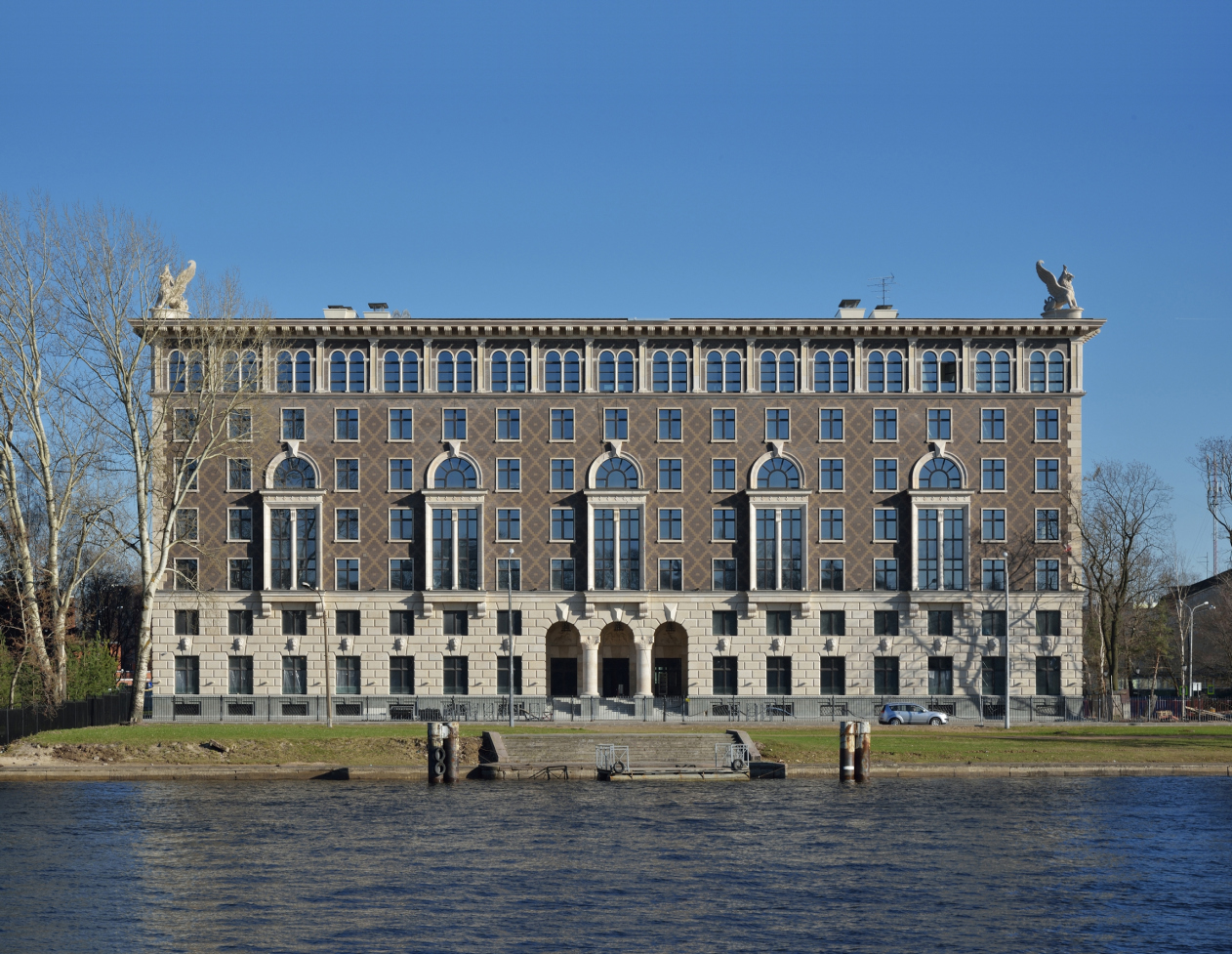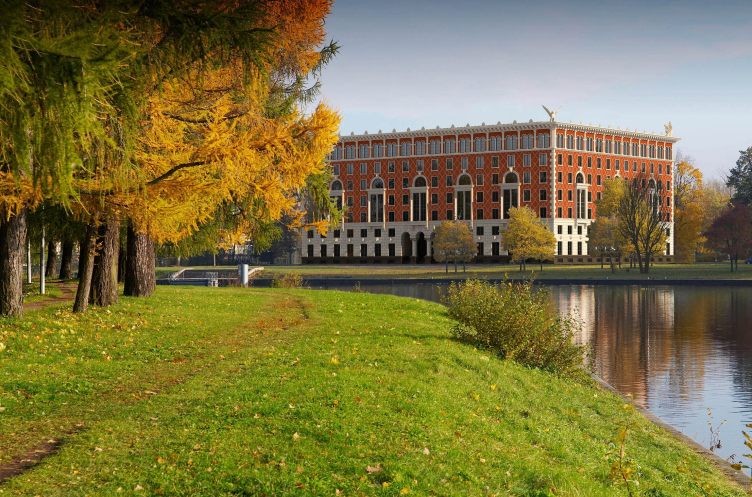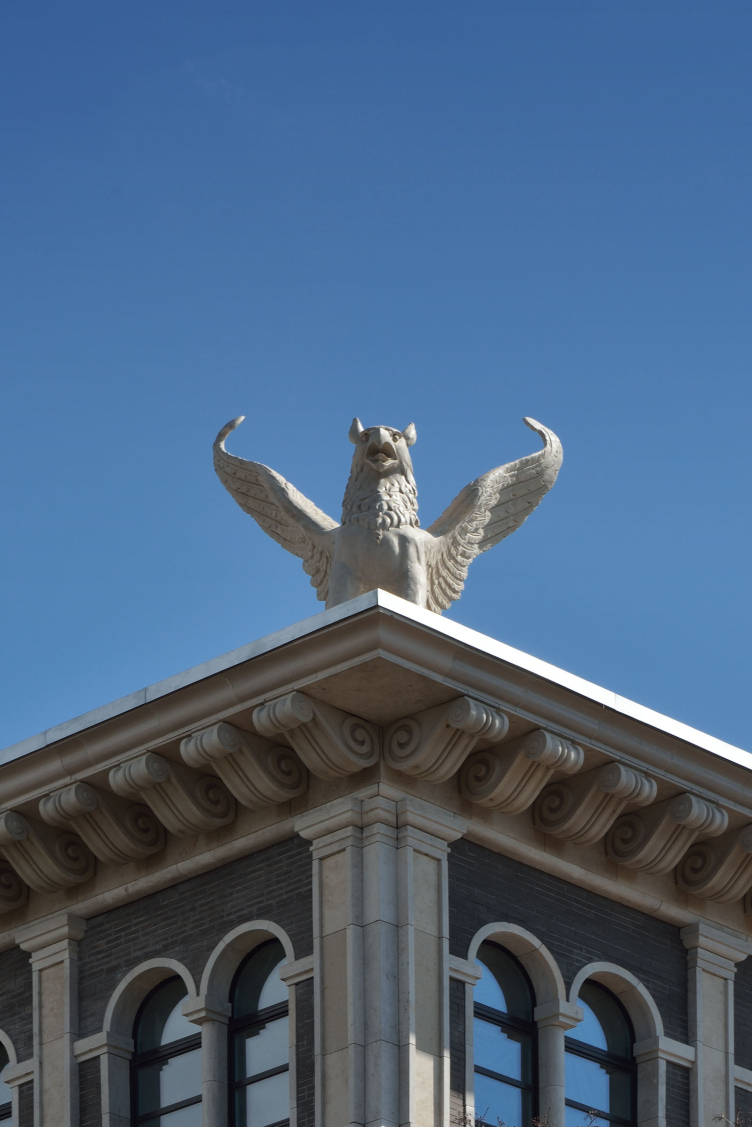
"Venice" residential house. Photo by Aleksey Naroditsky
We already wrote about the project of “House with the Griffins” on the Krestovsky Island, and now the house is complete. It is built very accurately, with only small deviations from the original project: the bright coloring of visualizations changed into the modest nuances of northern, although still sunny, autumn. The brickwork turned from red to brown, the yard lost the original relieves. But these are details. The house found itself in its place exactly as it had been designed, and the architects are demonstrating, with quiet pride, the photographs made from the "project" standpoints, admiring their work.
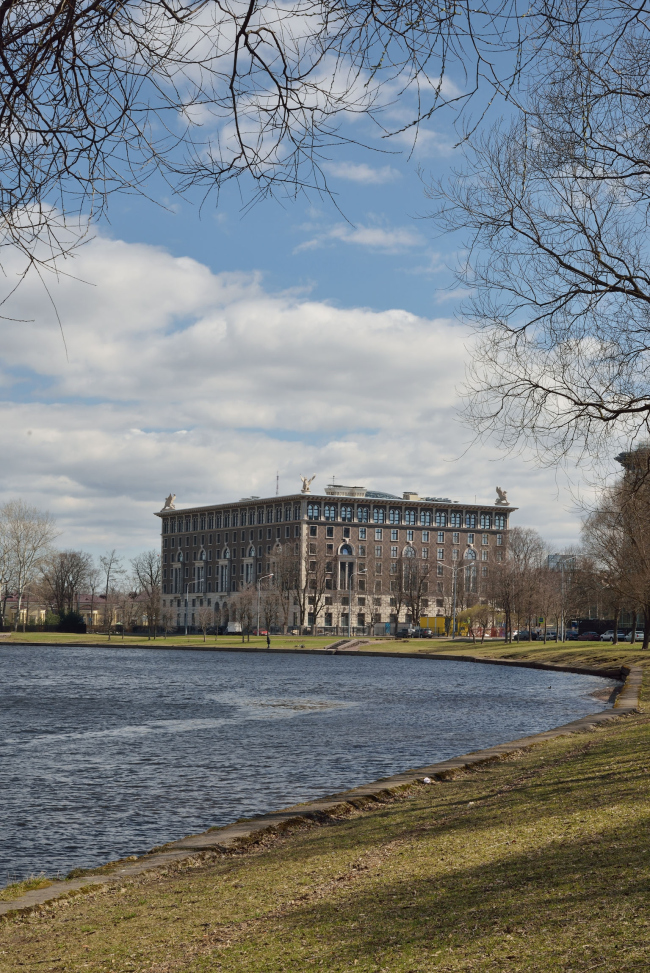
"Venice" residential house. Photo by Aleksey Naroditsky

"Venice" residential house. Photo by Aleksey Naroditsky
The "materialization" effect is indeed impressive. Particularly striking are the stone rustication of the first tier with a rough surface, the diamond facets of the keystones, the full-weight cantilevers, the sculptural lion masks, and the squatting columns with semi-Gothic Early Renaissance capitals in front of the deep bay of the entrance. House acquired that degree of material density and reality of form that is really what people like most about the historical architecture. Nowadays, achieving such an effect is rather a tall order: the stone is not inexpensive, and the industry prefers thin veneer sheet to the massive relief - that, as opposed to simple polishing requires thorough sculptural finishing. In a word, not only drawing such a stylized house but also implementing the entire decoration that you devised is no small feat, really some custom shop work.
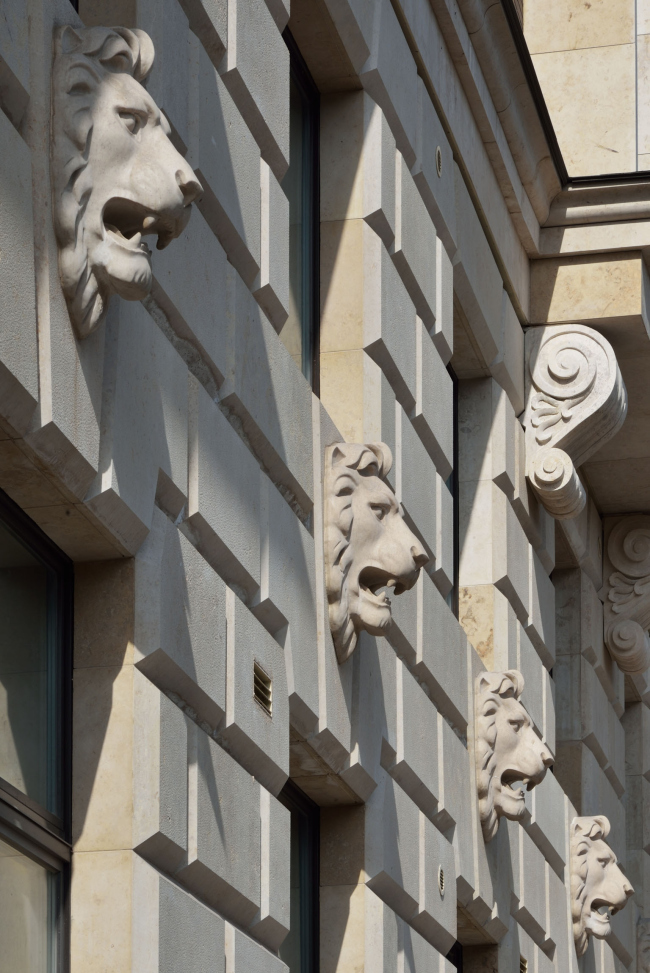
"Venice" residential house. Photo by Aleksey Naroditsky
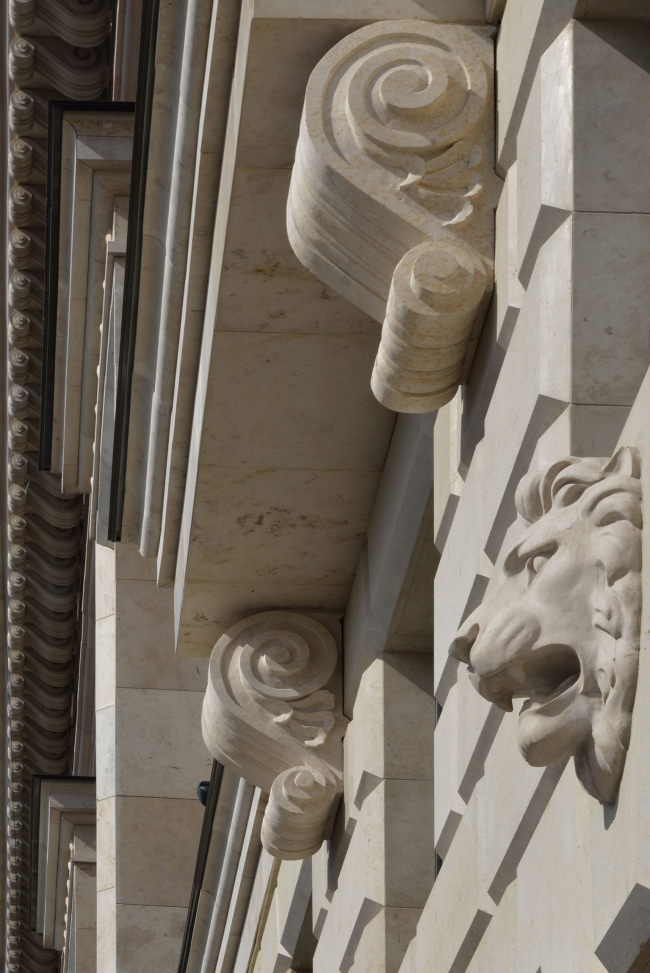
"Venice" residential house. Photo by Aleksey Naroditsky
And, even though in Saint Petersburg it is common to speak about the construction in the historical shapes, few are those who were able to make their dreams come true. Eugene Gerasimov is already building his third house, so the "Saint Petersburg historicism" is gradually developing into a personal style of his very own. The first one was the hotel at the Ostrovsky Square, the stone Palazzo at the very heart of the city, the second one was the house at the Tverskaya Street, clad in the stone "fur coat" executed in the vein of northern modernism.
Gerasimov also has a few unimplemented projects in the same style, on the verge of historicism and modernism. Carefully drawn and flawlessly executed, the "stylization houses" by Eugene Gerasimov are truly recognizable. Based on these three examples, one can already speak of the architect's trademark style. First of all, not one of them is a "fake" - i.e. they are not even meant to look exactly like the real historical architecture; neither can one confuse them with historical building thanks to the cleanly washed facades. Mastering the language of historical method, Eugene Gerasimov never selects one adverb as a whole, but after selecting his basic theme, he further combines some methods with others that elusively but at the same time sufficiently reliably testify to the date the house was built.
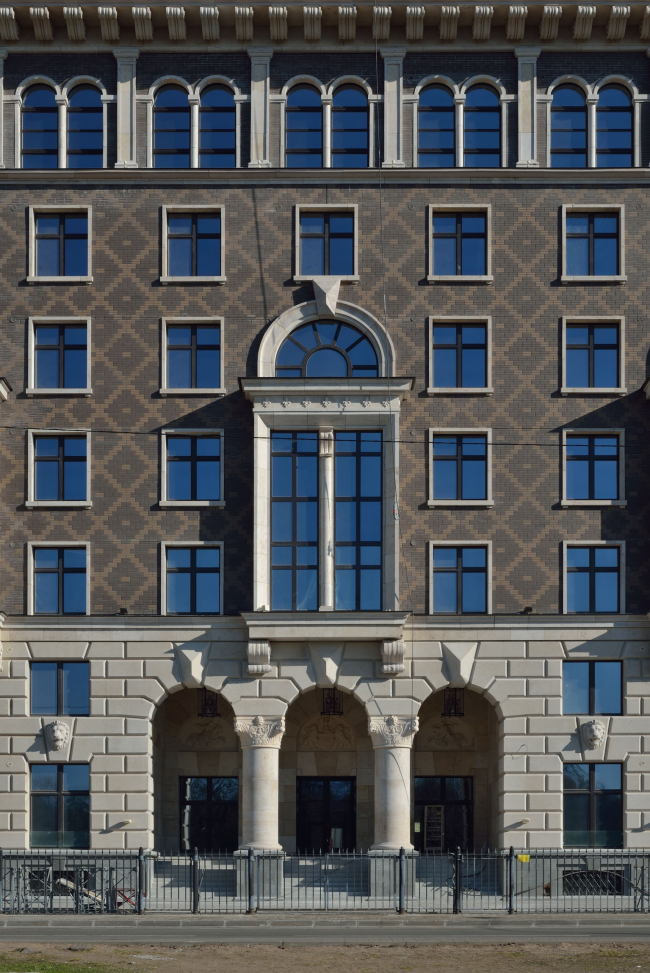
"Venice" residential house. Photo by Aleksey Naroditsky

"Venice" residential house. Photo by Aleksey Naroditsky
The house with the griffins is called “Venice”. The house stands near the water and the pattern of the brick diamonds together with the wide columns and arches spring from the Doges' Palazzo - but that wraps it up for the direct analogies here. Actually, one should not take the realtor-given name all too seriously; besides, the Venetian allusions - a theme that was spun too many time as it is - inevitably entail a number of extra meanings. The most obvious one of them we get by adding the word "northern" to the word "Venice": in the early XX century, the Saint Petersburg architects had already developed a lot of "Venetian" themes, for example, the entrance stanzas turned to the water, so now it is rather difficult to tell just which Venice is being quoted by Gerasimov's house - the Italian or the northern (i.e. Russian). On the other hand, the brick ornaments of the Doges' Palazzos were loved by Moscow's "Stalin" architects - and the silhouette of Stalin-era art deco is also present here, especially if one is observing the house from a distance.
However, upon a closer look, we notice that the inserts of the three-story windows look more like the windows of the British palaces of XVII century rather than the "Stalinist" or "Venetian" facades (in passing we will mention that something British, as a rule, is present in many today's stylizations, this is a mark the time of sorts, everybody is into England and everybody is happy to see something British on their facades)... However, the Griffins at the corners of the house return us to the symbols of Petersburg.
The sunlit atrium/courtyard, is straddled by a light glass arch - which gives one a feeling (provided that he or she is a keen observer) of a true historical space restored: as if the stone walls were here all the time, and the glass arch is but part of the reconstruction. All the walls of the atrium are coated with stone, and, although the architects were not able, echoing the lobby of the Admiralty, to cover it with the same kind of rustication as the facade (as was originally devised in the project), the grid of blocks is still clearly readable on the four stair turrets that give the courtyard the shape of a cross and put one in the mind of the castle architecture of the times of Paul I - which, again, brings us back to Saint Petersburg.
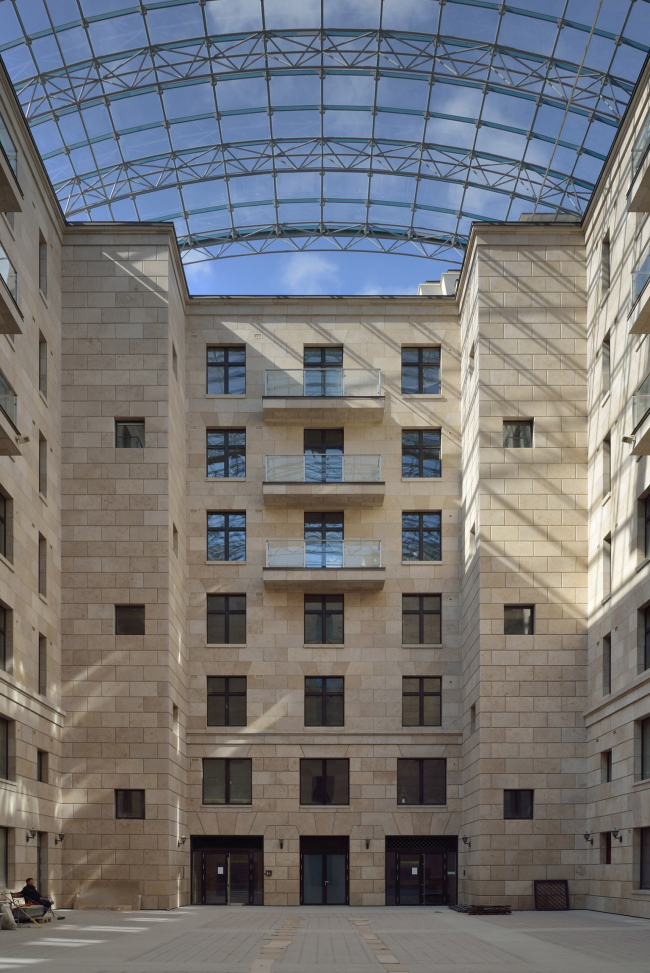
"Venice" residential house. Photo by Aleksey Naroditsky
The analysis of the architectural quotations and their origins could go on and on but the meaning of the resulting image seems to be as follows: Eugene Gerasimov not so much as added to Saint Petersburg yet another "Venetian" house (as had often been done back in the XIX century) as dedicated his own successfully implemented house to the meditation on "Venetian Saint Petersburg" - i.e. how much of Venice has our North got in it). The result is quite material, and one can safely say that it will find its due place in the nation's Northern Capital's "cultural gathering".

